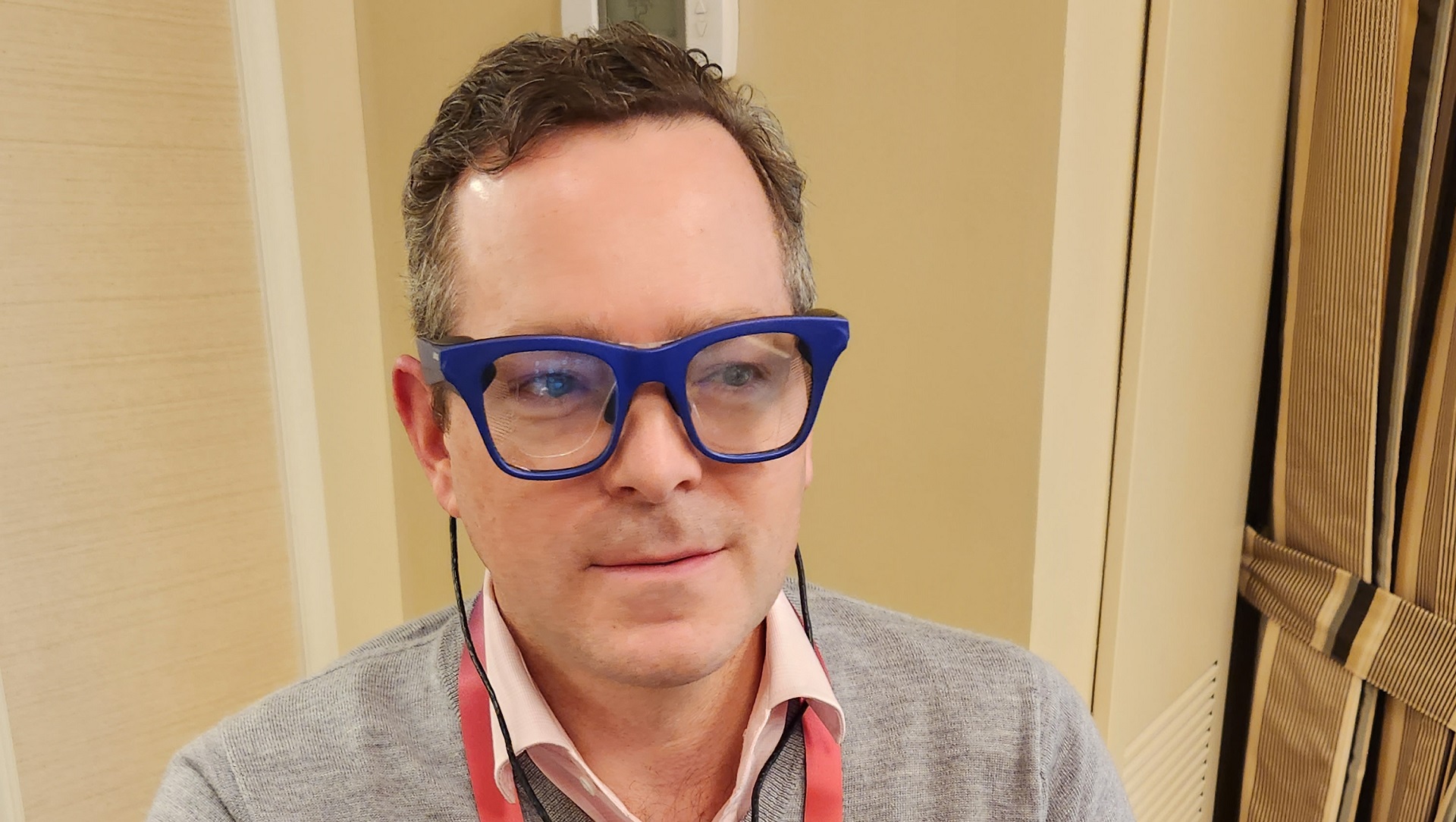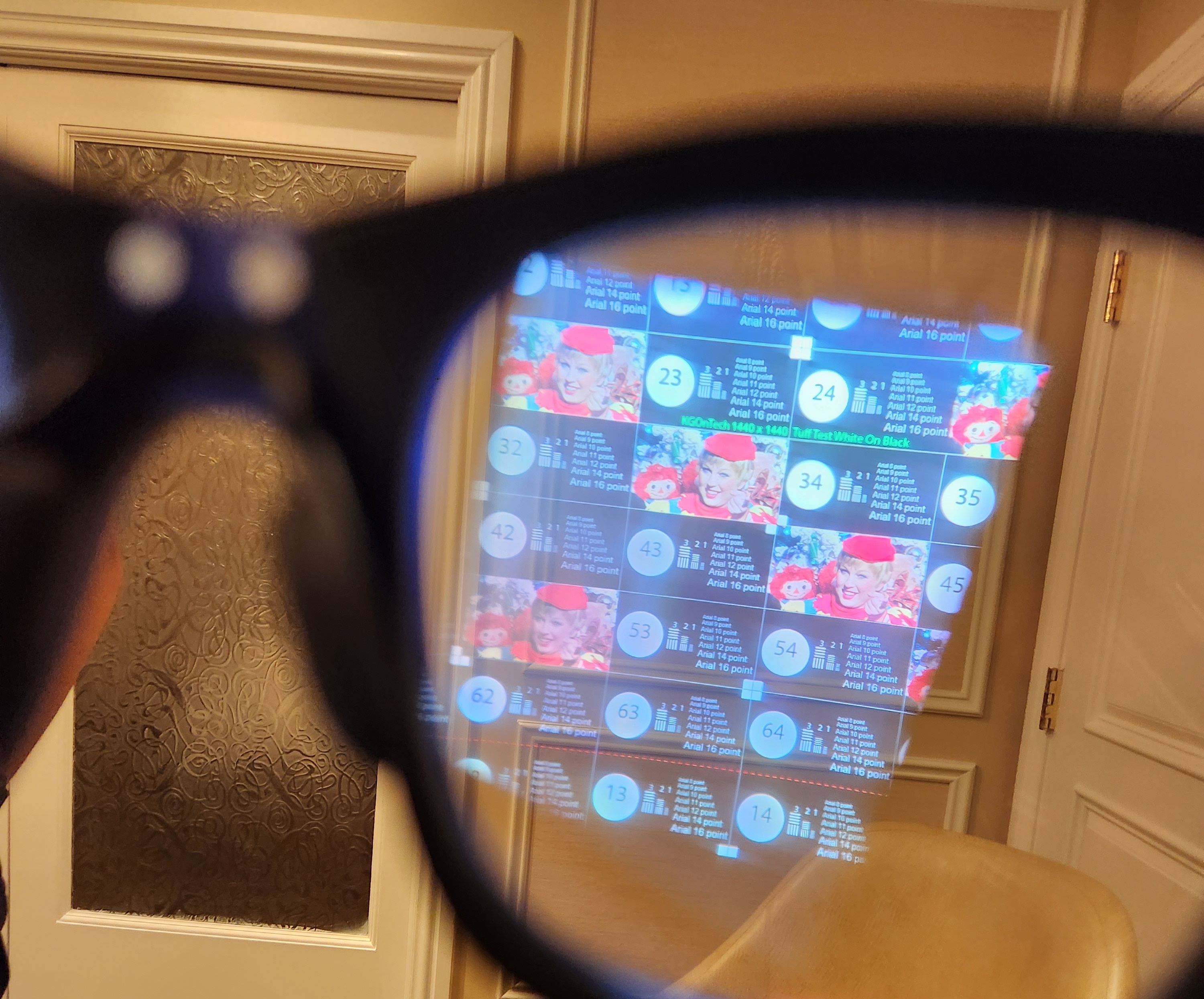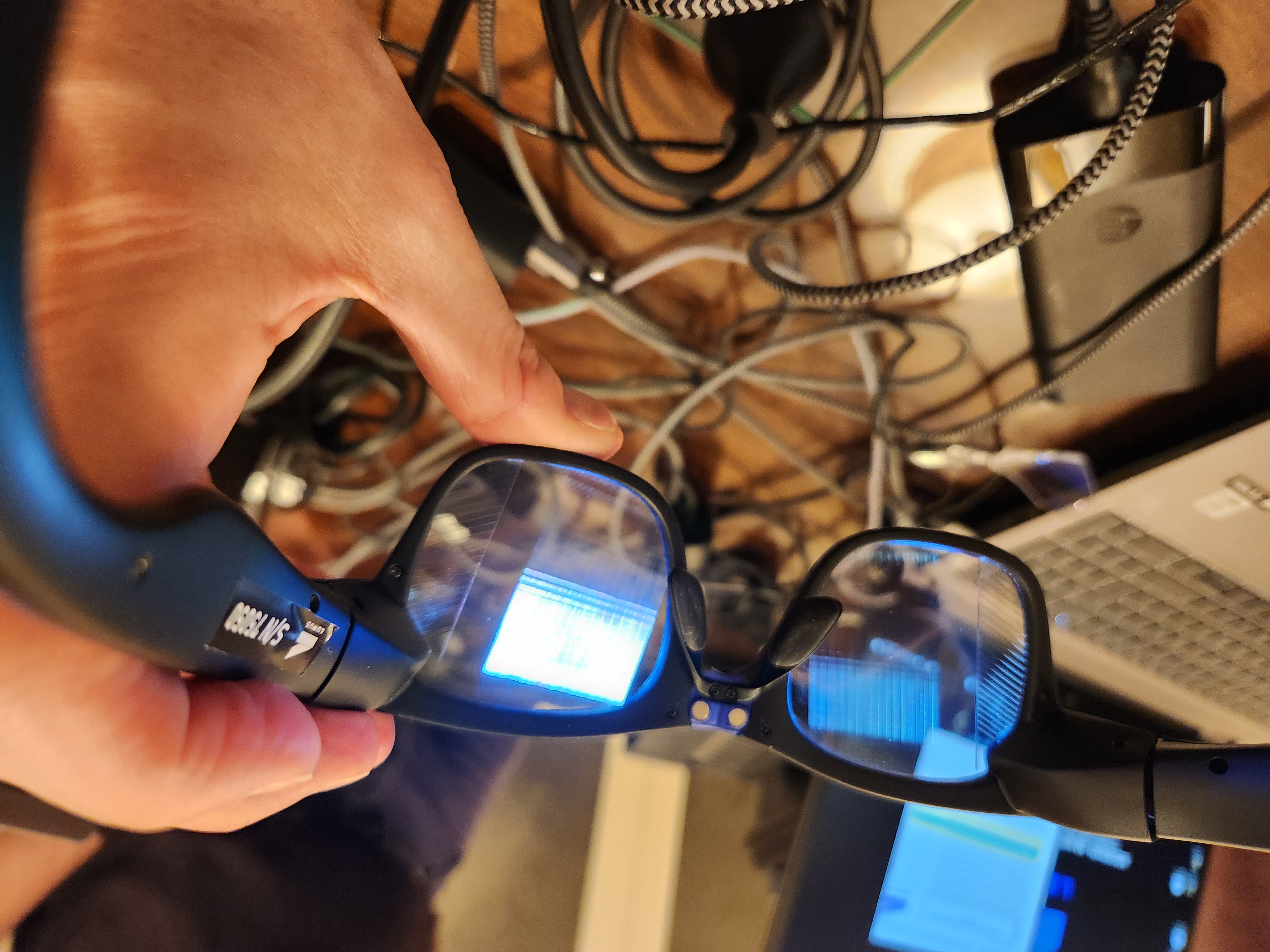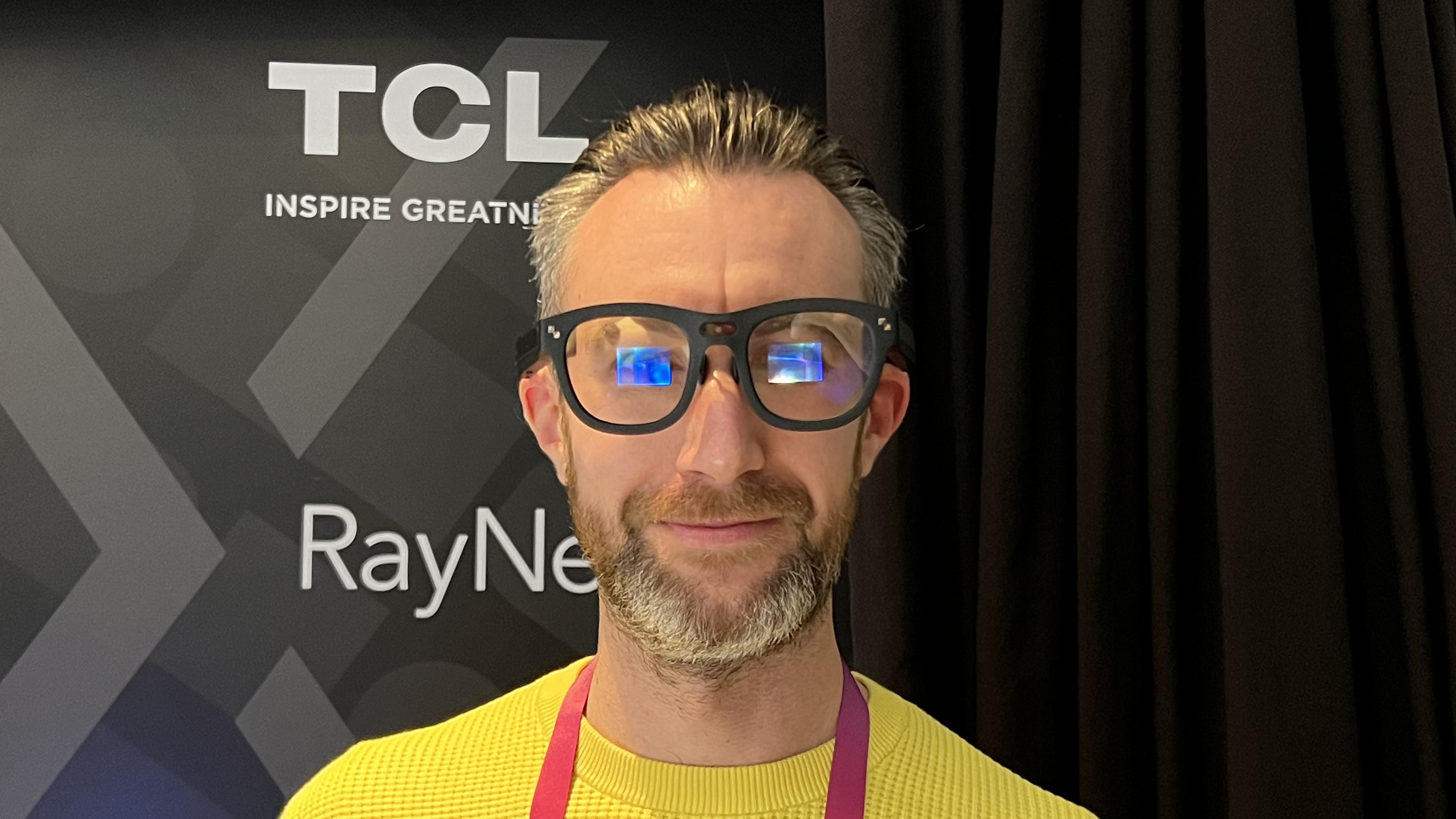Eyes-on with Lumus Z-Lens, the mind-blowing future of AR glasses
AR like you've never seen it before

With everyone from Apple to Xrai announcing augmented reality glasses or rumored to be entering the space, the chatter is loud enough to merit angry looks at the library. It seems every company is working on some form of headset, or eyewear, or visor, or glasses, to bring the digital world right into your field of view. And after meeting with Lumus, everyone else is just playing games.
In a hotel room on the third floor of The Venetian hotel on Thursday, day one of CES 2023, I saw the company’s Z-Lens architecture, which I’d call the future of augmented reality glasses. And it simply took my breath away.
I’ve worn every headset under the sun at this point, including models from Sony and HTC and Microsoft and glasses from Magic Leap and Lenovo and everyone in between. And they’re all somewhere between mediocre and disappointing: They’re clunky things with wires, or heavy bands that weigh upon the forehead, or they have limited fields of view, obstructed by their own design. Or they simply don’t work well.
Lumus, on the other hand, makes a lens that’s nothing short of perfect. Or a waveguide, I should say, the technical term for projecting an image onto or into the glasses in front of your face.

“There are two approaches to waveguides,” Dave Goldman, VP of marketing for Israeli-based Lumus, told me. “One is called diffractive, and that’s the other guys. And I mean everybody else, I’m talking about some of the in-house teams at the tier one companies as well as every competitor of Lumus currently.”
That includes, for example, the Nreal Air and VITURE One XR Glasses -- and the brand new TCL RayNeo X2 glasses. Goldman's company uses a different technology, reflective waveguides, which allow for vastly brighter images and much more efficient waveguides, meaning lower power solutions. It means the lenses are thin enough and bright enough to fit in ordinary glasses. The Z-Lens image is created by a projector module that sits in the frame; it has an LED and an LCOS display and a prism. Light from the projector is sent into the waveguide, where two sets of mirrors embedded in the lens expand that image to fill your field of view. So mirrors, it’s all mirrors. Really, really smart mirrors.
So mirrors, it’s all mirrors. Really, really smart mirrors.
To try them out, Goldman gave me a pair of chunky, blue, Buddy Holly-style glasses with flexible wrapped cords coming out of each temple. I put them on – they’re light and feel much like ordinary glasses. And there, hovering before my eyes, was a perfectly readable, perfectly bright and clear grid with pictures and text – a simple demonstration of what the Lumus Z-Lens can do.
Get daily insight, inspiration and deals in your inbox
Sign up for breaking news, reviews, opinion, top tech deals, and more.
Using an attached laptop, he ran through a few demos: Some characters from Sesame Street, a few sample images, and an animated video of a steampunk-style flying airship soaring around, zooming near and far. Everything worked flawlessly, bright enough to be visible in ordinary sunlight, clear enough to see through, and completely invisible to anyone looking at me.

The reality of augmented reality
The glasses of the future, whether augmented or virtual or mixed reality, will take a variety of forms when they finally ship sometime in the near future (18 to 24 months is my best guess, though who knows what Apple will do). Some will be immersive headsets that lean toward virtual reality; others will be pass-through devices that capture reality and intertwine it with digital effects for a whole new reality. Some will be everyday wearables that present “snackable” data: directions to the mall for pedestrians, pace and heartrate for athletes, song and artist information for music fans, and so on.
This last category is the most interesting in my eyes: A simple overlay of information that can fill your world with data and inform your actions … and can be ignored if you so choose. I’d put Lumus in that category: Its Z-Lens waveguide architecture isn't immersive like VR, and it doesn't (at present anyway) map out the world around it and layer virtual stuff in there. But it does superimpose stuff onto reality, and that creates some really intriguing options.
In order for AR glasses to really make a dent with the consumer market, they need to be impressive both functionally and aesthetically. And lets be clear, AR glasses that look and feel just like ordinary glasses could transform this entire space. But projecting images that are viewable outside requires a picture that’s clear and bright and sharp and full of color, which is a real technical hurdle. Images in the Hololens look good, but the device is clunky. While Magic Leap or Nreal is more wearable, the images aren’t great. Lumus breaks the mold.

TCL RayNeo X2 glasses share similarities with other AR smart glasses, like the Nreal Air and VITURE One XR Glasses. But these lenses have been outfitted with a pair of Micro-LED optical waveguide displays that provide the wearer with a personal heads-up display, and in the glasses’ stems you’ll find speakers so you can hear audio through them too. Read more
The company’s breakthrough is astoundingly simple: Better mirrors, etched into a coating that sits on the lens of the glass itself, reflect an image straight into your eye. Lumus’s newest models use multiple mirrors to refract crisp and clear pictures that your eye sees hovering right before you. The new model, unveiled at CES, uses a smaller projector module than previous generations, letting the company make smaller glasses. Lumus is also able to bond the lenses directly onto prescription glasses, sort of like the extra light-sensitive coating you might get.
Inherent to the technology is a privacy component: Because the mirrors are designed to refract light in a way that makes it most visible to the eyes of the wearer, other people won’t be able to see what you’re seeing. So pull out those lecture cheat sheets, or notes on your next interview … no one else will know you’re looking at them.
The company claims a 2K x 2K resolution and a brightness of 3,000 nits, which should allow you to see images from the projector in ordinary daylight. I was stuck in a hotel room, but the images were clearly bright enough for daylight.
So when will we see this?
Lumus is in talks with major technology players, Goldman told me, though he declined to name names. And the company has mass manufacturing partnerships set up. Quanta Computer (which makes the Apple Watch and Macbook Pro, among other products) has a full line set up in Taipei. And Schott, the German glass company, has a production line set up in Panang, Malaysia.
But we won’t see Lumus in the market anytime soon. Expect it sometime in 2024, he said, and likely as a monocular solution at first. Either way, prepare to have your mind blown, as well. This is truly the future.
Check out our CES 2023 hub for all the latest news from the show as it happens. We'll be covering everything from 8K TVs and foldable displays to new phones, laptops, and smart home gadgets, so stick with us for the big stories.
After 25 years covering the technology industry, Jeremy Kaplan is a familiar face in the media world. As Content Director for TechRadar, he oversees product development and quality. He was formerly Editor in Chief of Digital Trends, where he transformed a niche publisher into one of the fastest growing properties in digital media. Before that, he spent half a decade at one of the largest news agencies in the world, and cut his teeth in magazine business, long before the birth of the iPhone. In 2019, he was named to the FOLIO: 100, which honors publishing professionals making an industry-wide impact.